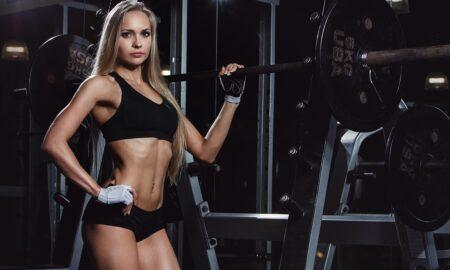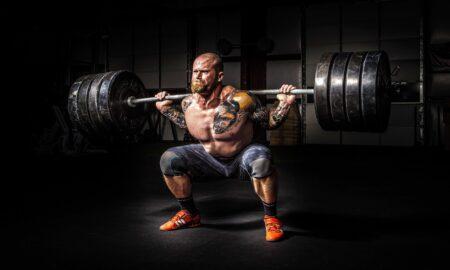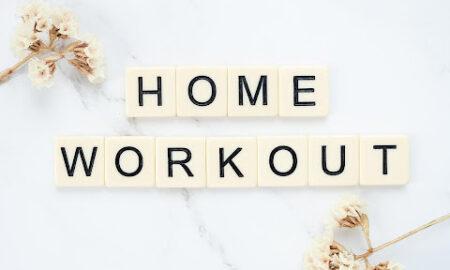Q: I’m trying to get bigger. I am 20 years old, and I’ve been training since I was 15. I’ve tried many programs—many variations of splits, full-body routines and HIT. I weigh 150 to 155 pounds, and all I want are size and strength. I’m currently doing a once-a-week program. I do one set of each exercise and then rest a week. I’m doing full squats, bench presses, deadlifts, reverse barbell rows, military presses, calf raises and weighted crunches. I never skip meals, and I eat snacks between meals. Since I have a fast metabolism, I don’t really worry about calories. I don’t eat junk all day, and I try to eat clean. I haven’t seen a difference on the scale in years, and my main purpose for training is to put on mass, bulk up and gain weight. Can you help?
A: I understand that you have a very fast metabolism and it’s extremely difficult to put on any weight or muscle mass, but I think you need to increase your workload at the gym in order to get bigger. Training each bodypart only once a week and with only one set is simply not enough to get your muscles to grow.
In order to hypertrophy the muscle fibers, you need to increase the volume by training each muscle group more frequently than once a week, increasing the number of exercises and of repetitions. Although you’re getting stronger, your current routine is not building bigger muscles.
The main problem is that you’re doing only one set of one exercise for each major muscle group—legs, chest, back, shoulders, calves and abs. There’s no way you could possibly get enough muscle stimulation from so little work. Even if you take that one set to failure and are lifting progressively heavier weights each week, it’s still not enough to stimulate new growth.
In order to make the muscles bigger, you need to tear down the muscle tissue so it can grow back bigger and stronger. The optimum number of sets for maximum growth has always been debated. I believe that the key is to use the most effective exercises with the right amounts of intensity and volume.
The exercises you’re using are the basic moves and involve several major muscle groups. That means you’ll be recruiting the maximum amount of muscle tissue during your workout. You need to do more than one set of each exercise, however, and you need some additional movements.
You also need the right amount of resistance to stimulate growth. Using a weight that’s too light won’t cause the muscles to grow. Using a weight that’s too heavy will build more strength in the tendons and ligaments than it will build muscle mass.
I recommend using a weight that allows you to get six to eight repetitions. That will tear down the muscle fibers and build strength at the same time. Basically, it’s going to be much more difficult but more productive to do three or four sets of heavy squats for six to eight reps than it would be to do only one set of squats for six to eight reps.
I also recommend that you begin using a split routine, training your body over two days, instead of a full-body workout. That will let you add more exercises and sets without overtraining.
One very effective split has you training your chest, back, shoulders and abs at one workout and your legs, calves and arms at the next. You train one or two bigger muscle groups (chest, back, legs) along with two or three smaller muscle groups (shoulders, arms, calves and abs) at each workout.
Stick with the basic exercises because those are the best for stimulating growth. Keep the sets moderate—three to four per exercise—and use a heavy resistance that will limit your reps to six to eight. Keep using progressively heavier poundages each week to keep your muscles growing. As long as you hold the total sets in your workout to 25 or less, you won’t overtrain, and you’ll keep growing.
Here’s a sample routine that you can use to start your mass-building program:
Workout 1
Bench presses 4 x 10, 8, 6, 6
Incline dumbbell presses 3 x 8, 6, 6
Wide-grip chins 3 x 10, 8, 6
Barbell rows 3 x 8, 6, 6
Deadlifts 3 x 8, 6, 6
Seated barbell presses 3 x 10, 8, 6
Upright rows 3 x 8, 6, 6
Incline situps 2 x 30-40
Incline knee raises 2 x 20-30
Total sets: 26
Workout 2
Barbell squats 4 x 10, 8, 6, 6
Leg presses 3 x 8, 6, 6
Stiff-legged deadlifts 3 x 10, 8, 6
Standing calf raises 3 x 15, 12, 10
Seated calf raises 3 x 20, 15, 12
Close-grip bench presses 3 x 10, 8, 6
Dips 2 x 8, 6
Barbell curls 3 x 8, 6, 6
Total sets: 24
Train three nonconsecutive days a week. For example, you can train on Monday, Wednesday and Friday or Tuesday, Thursday and Saturday. Which days you train isn’t important; just train three days a week and don’t train two days in a row. Here’s an example of how the routine would look:
Monday: Workout 1
Tuesday: Rest
Wednesday: Workout 2
Thursday: Rest
Friday: Workout 1
Saturday: Rest
Sunday: Rest
Monday: Workout 2
And so on.
After you have the workout routine in place, you need to work on your diet. For a person with a fast metabolism who’s trying to gain mass and size, diet is extremely important. You can follow the best training program in the world, but without the right nutrition program, you will make no progress.
You mentioned that you don’t skip meals and don’t eat any junk food, but you didn’t go into detail about your nutrition program. In order to pack on size, you have to eat enough calories as well as the right combination of protein, carbohydrates and fats.
The first step is to eat six meals each day. By eating (or drinking a protein drink) every three hours, you will be feeding the muscle cells the calories and nutrients they need to grow. If you go too long between meals, you put your body in a catabolic state and prevent your muscles from reaching their potential.
The next step is to eat enough calories. How many calories you will need before your body starts to gain weight and build muscle mass is an individual thing. When I was 20 years old, I needed to increase my calories to more than 4,500 before I finally started to gain weight.
Begin writing down exactly what you eat each day, listing calories, protein, carbohydrates and fats. Only by figuring out exactly what you’re eating will you know what you have to do to start making progress. You may find out that you’re not eating enough protein or enough carbs or just not enough calories.
At a weight of 155 pounds, you need to eat about 200 grams of protein, 400 grams of carbs and 60 grams of fats each day. That would add up to approximately 2,940 calories. If that doesn’t do the trick, you may have to increase the calories to start making gains.
Change your training program to begin stimulating more muscle growth, and then make sure you feed those muscles properly with the correct nutrition. If you keep at it and make both your workouts and your diet progressive, you should finally begin to increase your muscle mass and gain bodyweight.
Q: I’ve been pretty lazy this year and have finally decided to get off my ass and get back in shape. What would be a good program for someone coming off a long layoff? I’d prefer to work out Monday, Wednesday and Friday unless you think training four or five days a week is better. I also have a lot of fat to lose and a lot of muscle to gain. Please help!
A: Start back very slowly with a full-body workout. Do only one or two exercises for each major muscle group, and train the whole body at each workout. That’s the best way to get the muscles accustomed to resistance training again.
Your preference for training on Monday, Wednesday and Friday works perfectly with a full-body routine. It’s essentially a beginner’s program. In addition to doing a limited number of exercises for each muscle group, you also want to limit the sets and amount of resistance you use at each workout. Training too heavy or pushing it too much at this stage of the game can lead to excessive soreness or even injury.
Use a weight that gives you 10 to 12 reps without too much effort. If you haven’t trained for a long time, almost any exercise will bring about muscle tissue damage and soreness. After a week or two, your body will begin to adapt to the workouts and you can start using progressively heavier weights and pushing yourself a little more.
Here are two good routines that you can use to get back into training. Alternate them on your three-days-a-week program.
Workout 1
Incline situps 2-3 x 30
Incline knee raises 2-3 x 30
Bench presses 3 x 10-12
Lat pulldowns 3 x 10-12
Seated dumbbell presses 3 x10-12
Lateral raises 3 x 10-12
Pushdowns 3 x 10-12
Standing dumbbell curls 3 x 10-12
Leg extensions 3 x 12-15
Leg curls 3 x 10-12
Dumbbell squats 3 x 10-12
Dumbbell stiff-legged deadlifts 3 x 10-12
Standing calf raises 3 x 10-15
Workout 2
Hanging knee raises 2-3 x 20-30
Crunches 2-3 x 30
Leg extensions 3 x12-15
Leg curls 3 x 10-12
Dumbbell lunges or leg presses 3 x 10-12
Hyperextensions 3 x 15-20
Seated calf raises 3 x 12-15
Incline dumbbell presses 3 x 10-12
One-arm dumbbell rows 3 x 10-12
Seated dumbbell presses 3 x10-12
Seated laterals 3 x 10-12
Lying triceps extensions 3 x 10-12
Barbell curls 3 x 10-12
You also mentioned that you gained a lot of fat during your extended layoff. You will really need to shape up your diet in addition to getting back to the gym. If you start training again but keep your diet the same, you probably won’t lose that much bodyfat even though you will add muscle tissue.
If you haven’t done it already, you should begin eating at least six small meals a day in order to feed the muscles and keep the metabolism stimulated. Have at least three whole-food meals—breakfast, lunch and dinner—with three protein drinks throughout the day. Try to eat or drink a meal every 2 1/2 to three hours.
You will also want to watch your carbohydrate intake. By eating a moderate amount of carbs, you starve the fat cells while still supplying the body with the energy it needs to train hard and recuperate from your workouts.
Stick with complex carbohydrates that are low-glycemic and high in fiber. Foods such as oatmeal, sweet potatoes, brown rice, whole-grain bread and vegetables, eaten in moderation, will provide glycogen for your muscles without making you fatter. I eat complex carbs in the morning and afternoon, but I limit my carbs to vegetables such as broccoli, asparagus, green beans and green peas in the evening.
Taking in an easy-to-digest supplement that’s high in whey protein and simple carbohydrates immediately after your workout will give your muscles the nutrients they desperately need to help them grow and recover. I always take two scoops of Optimum Nutrition’s 2:1:1 Recovery right after I finish training.
It’s also important to get high-quality protein throughout the day. Foods such as eggs and egg whites, turkey, chicken, fish and lean red meat are great choices for rebuilding muscle tissue. You can also use a top-of-the-line protein supplement such as Optimum Nutrition’s Pro Complex or Muscle-Link’s Pro-Fusion to provide your muscles with the protein they need for growth.
Start slow on your comeback and record your progress to stay motivated. By taking measurements and recording your workouts as well as your nutrition program, you will learn valuable information about your body that will help you to keep making progress as you get back in shape.
Editor’s note: John Hansen has won the Mr. Natural Olympia and is a two-time Natural Mr. Universe winner. Check out his Web site at www.NaturalOlympia.com, or send questions or comments to him via e-mail at John@NaturalOlympia.com. Look for John’s new DVD, “Natural Bodybuilding Seminar and Competitions,” along with his book, Natural Bodybuilding, and his training DVD, “Real Muscle,” at his Web site or at Home Gym Warehouse, www.Home-Gym.com. Listen to John’s new radio show, Natural Bodybuilding Radio, at www.NaturalBodybuildingRadio.com. You can send written correspondence to John Hansen, P.O. Box 3003, Darien, IL 60561. IM




















You must be logged in to post a comment Login